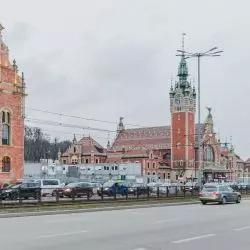Architecture and urban planning
How to design a city? The modern city - what is modern urban planning? The future of urban planning. How to develop urban space? Ecological city. What is The New Urbanism? Mistakes of urban planners - how to fix them
>.What is modern urbanism?
The urban planner creating a humanistic city today should enter the role of both a "therapist" of society and space, and the role of a visionary. He should begin by diagnosing the social and economic problems in a given area and propose evolutionary changes to the needs of space users for at least a dozen years ahead.
Urbanism is a syncretic science - it should include in itself elements of architecture, sociology, economics, psychology, proxemics, ergonomics, anthropology, cultural studies and ecology. An architect who creates a city plan "from scratch" or revitalizes the existing urban fabric, should take into account the results of public consultations, conservation considerations, compliance with the assumptions of the development or revitalization plan.
Alexander Volodarski -an architect and urban planner-claims that good urban planning is about finding a balance between public and private space, monumentalism and intimacy. It is also important to maintain aesthetic urban continuity and to take into account historical styles in combination with innovative solutions. It should be borne in mind that the value of real estate in which is good to live, work and trade is increasing, and the plan outlined now will project human relations in the future.
what is The New Urbanism?
One of the serious problems of modern cities is environmental pollution, which particularly affects the health of residents. Here one must agree with Le Corbusier that people in cities will always need: "sunshine, greenery and space." Yet, these goals are now being pursued differently than in the days of modernism. New urbanism - as the contemporary strand of postmodern urbanism is called - implies a return to the classic layout of the city with an extensive network of pedestrian, public and bicycle transportation, at the expense of reduced use of automobile transportation. Ecological solutions have become a necessity. The answer to the question of how to oxygenate the city is sought in urban landscaping and through various urban space revitalization efforts - rooftops of office buildings and residential buildings or flyovers are turned into gardens and walking areas. In this way, the area designated for public parks and recreational areas is expanded.
The boundary between city and countryside is disappearing. Examples of this are New York's High Line and Seoullo 7017 Skygarden. On the subject of the New York railroad viaduct turned into a park, read in the text Walking in New York. You can read more about the Korean garden created on the revitalized flyover in the article Seoul High Line.
What to avoid when designing cities?
From a city, one can read like an open book. You can see the history of a place, or lack thereof, but also the culture and mentality of modern society. Cities of the future can develop in two directions - one that takes into account the value and needs of the individual person (the empathetic Scandinavian model), and one in which the economic calculus is paramount. Currently, these two philosophies are fiercely fighting each other. Thinking about the world's largest metropolises, it seems, that the latter is winning - especially in fast-growing Asian cities. What does this lead to? Always to the suffering of the poor, examples being the "cage dwellings" (cage homes) in Hong Kong or the slums and squats springing up within many wealthy cities in Europe and the United States.
If we want to learn how to design a city, it is worth remembering what mistakes to avoid. The whole range of urban design sins can be seen in China - the rapid urbanization processes we face in that country are left to rival developers. Sometimes so-called "nail houses" (nail houses), whose owners refuse to be displaced, stand in the way of their greed. Cities from which old buildings (hutongs) have disappeared, such as Shenzhen, have no history, are built without aesthetics, and the residents are mainly young people (no normal generational continuity), others are ghost cities, products of central planning.
Mistakes made by urban planners are being attempted to be corrected by city residents themselves. This is the case of bottom-up informal urban development. Its examples include allotment gardens, which serve two basic functions - hortiterapeutic (a return to nature) and the opportunity to vent frustrations by regaining a sense of control over one's immediate surroundings - both of which are lacking in today's large urban agglomerations.
There is no such thing as an allotment garden.











































